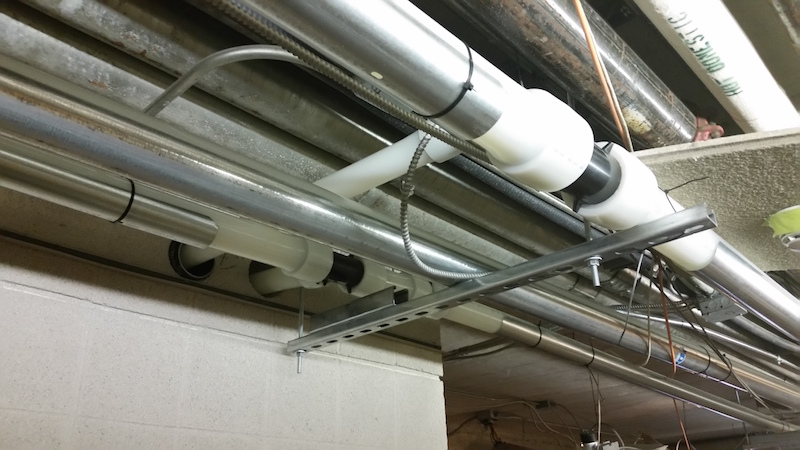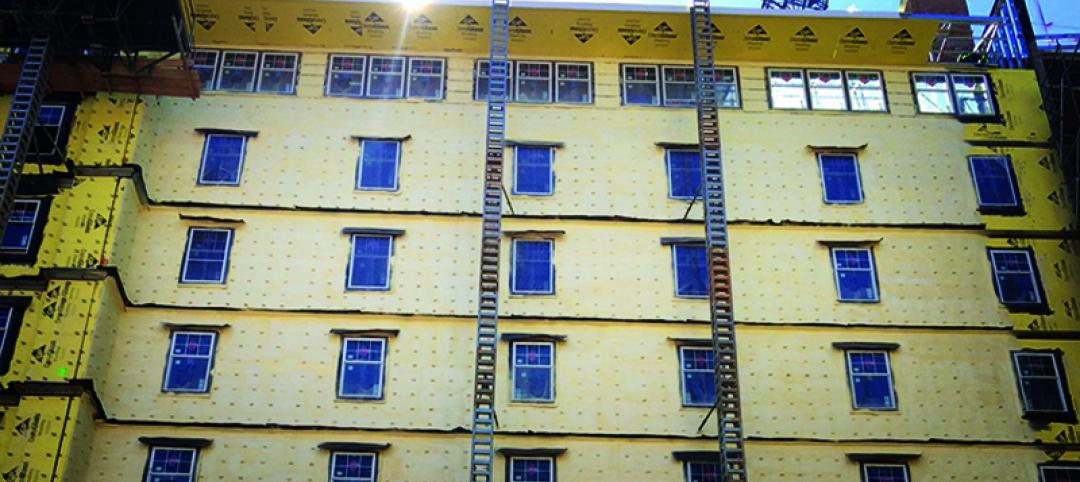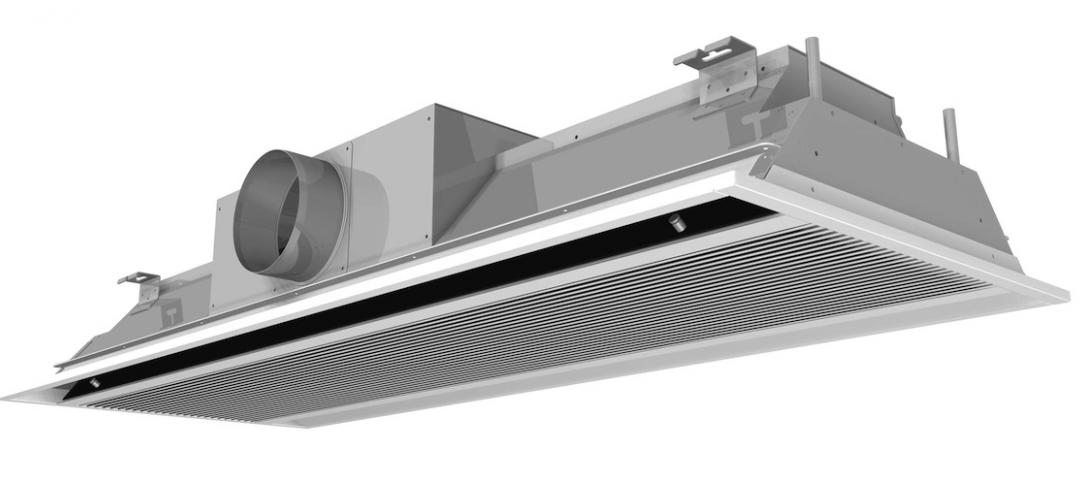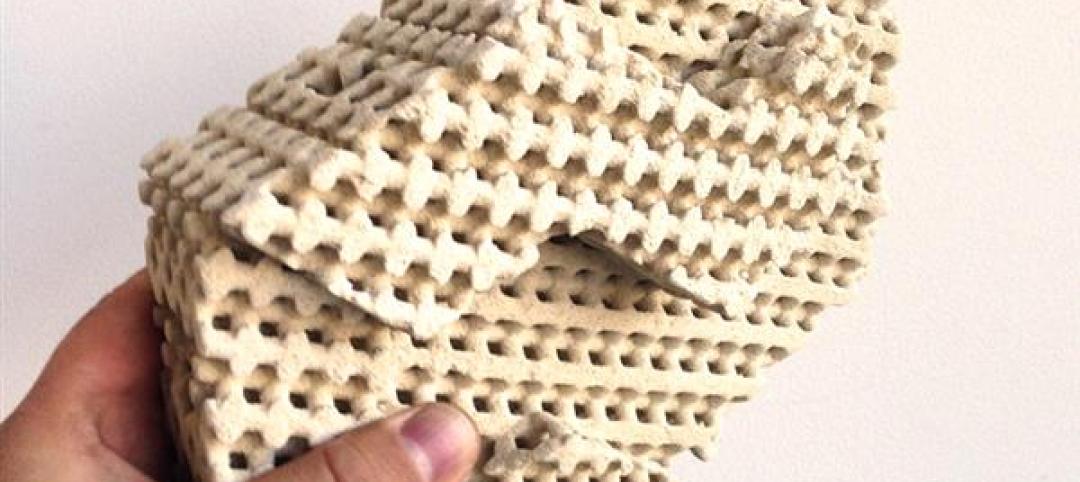Increases in energy costs are leading many building owners and facility managers to look for more cost-effective ways to heat and cool their buildings. Apartment buildings and student residences currently using electric systems are prime candidates for conversion to hydronic heating systems, and sometimes even water-based cooling systems.
Wilfred Laurier University, in Waterloo, Ont., opted to retrofit the electric heating systems in two of its existing student residences. The school went with hydronic heating and cooling for one of the buildings and hydronic heating for the other (which continues to use its existing forced-air DX cooling system).
The Bricker Residence, a nine-story apartment-style structure with four-bedroom suites that feature a common kitchen, bathroom and living room, required a retrofit that was designed to have fan coil units located in each of the suites, and a new piping system added to supply heating and cooling water in a two-pipe switch-over system.
The five-story Grand River Residence included classrooms and administrative offices on the first two floors with residence rooms on floors three through five. The project was designed to have hydronic reheat coils added to the existing VAV boxes already installed in the offices, classrooms and suites while the existing forced-air cooling system was kept intact. Due to the configuration of the building and the various locations of the VAV boxes, each floor had its own main loop that was fed with larger-diameter risers.

Tight timeframes and tight spaces
One of the key challenges was to have the installations completed when students were on summer break. Due to the tight timeline, and the fact that these were both existing finished buildings, mechanical contractor Modern Niagara opted to use PEX piping instead of a rigid pipe system. There were a number of areas where space was limited for the installation of pipe, so the flexible nature of Uponor PEX proved to be advantageous in those areas.
Uponor Design Services created the piping designs for each of the projects to ensure the pipe sizing and flow rates would meet with the engineer’s original design calculations and requirements. The project incorporated PEX sizes up to and including 3" diameter pipe with larger sizes being black iron.
For the Bricker Residence, Uponor PEX risers were installed between floors to connect to each of the fan coil units. The Grand River Residence utilized smaller-diameter Uponor PEX branched from the main loop on each floor to feed each of the reheat coils.
For both projects, the installers transitioned between black iron pipe and 3" PEX with brass threaded transitions and/or flange kits. Flange kits were also used for connecting the PEX pipe to some valves and circuit setters. Most of the horizontal PEX installations included Uponor PEX-a Pipe Support to allow for fewer hanging brackets and to help minimize pipe expansion.
Upon completion, the systems were filled and pressure tested, and the piping system was insulated before reinstalling the ceiling panels and sections of drywall. Thanks to the ingenuity of the system design and the efficiency of the installation crews, both projects were completed on schedule and the buildings were ready for the fall semester of incoming students.
Related Stories
HVAC | Nov 12, 2015
LG Electronics opens expanded headquarters for thriving U.S. air conditioning systems business
Cutting-edge facility aims to connect and educate contractors, engineers and industry leaders, boost local economy
HVAC | Sep 25, 2015
Does over-designing HVAC systems make for inefficient, uncomfortable spaces?
Reliance on outdated standards at odds with sustainability
Sponsored | | Jul 15, 2015
Get a Higher Return on Your Retrofit Investment with New Building Envelope Analysis Service
Sponsored | Insulation | Jun 18, 2015
A modern approach to continuous insulation
The poject included replacing the original residence halls built in the 1970s
Sponsored | Transit Facilities | Jun 15, 2015
Success through teamwork for landmark California project
The Anaheim Regional Transportation Intermodal Center (ARTIC) is the Grand Central Station of the future
HVAC | Feb 6, 2015
ASHRAE, REHVA publish guide to chilled beam systems
The guide provides tools and advice for designing, commissioning, and operating chilled-beam systems.
Brick and Masonry | Feb 5, 2015
3D-printed 'cool brick' may provide cooling solution for arid locations
Cool Brick is made of porous ceramic bricks set in mortar. The bricks absorb water, which cools the air as it passes through the unit.











